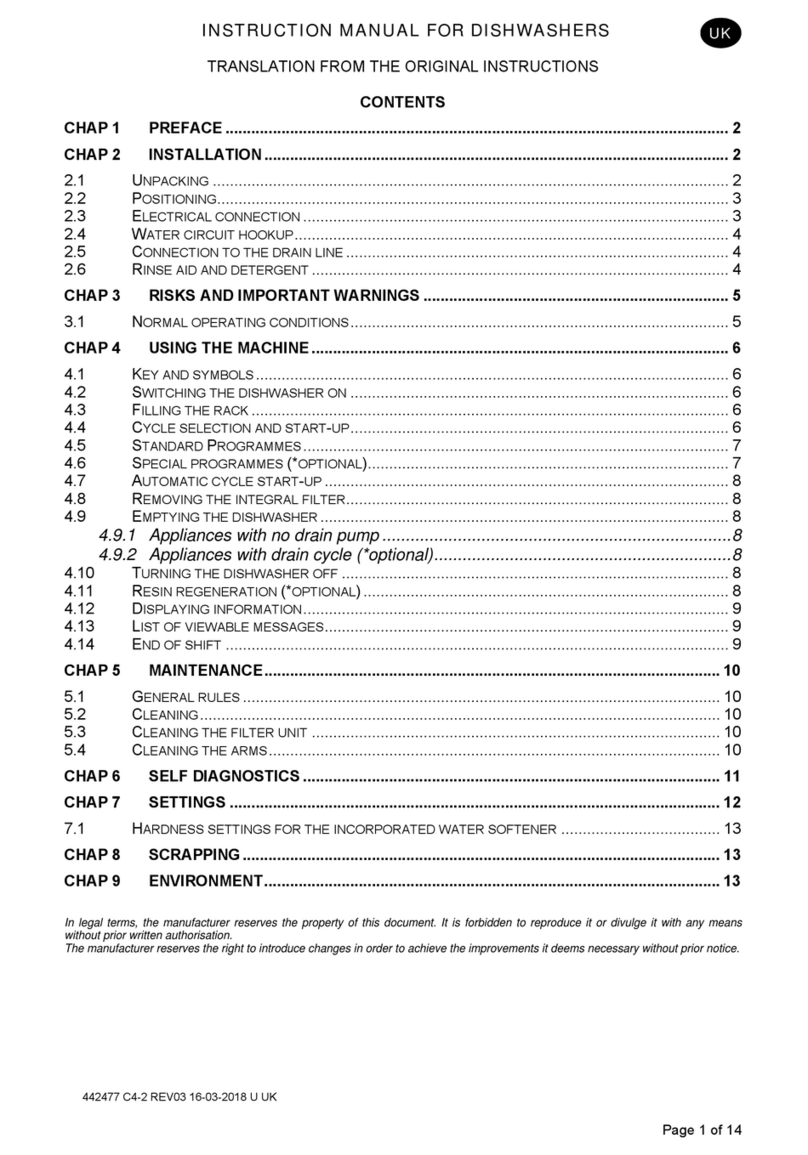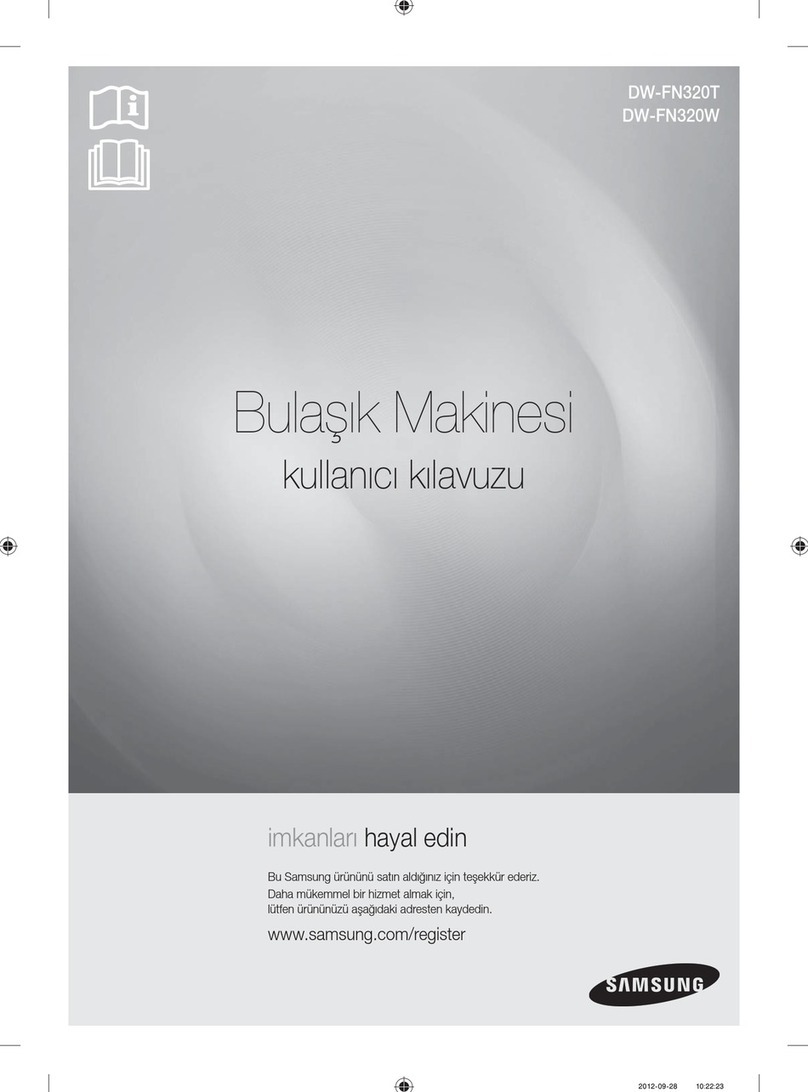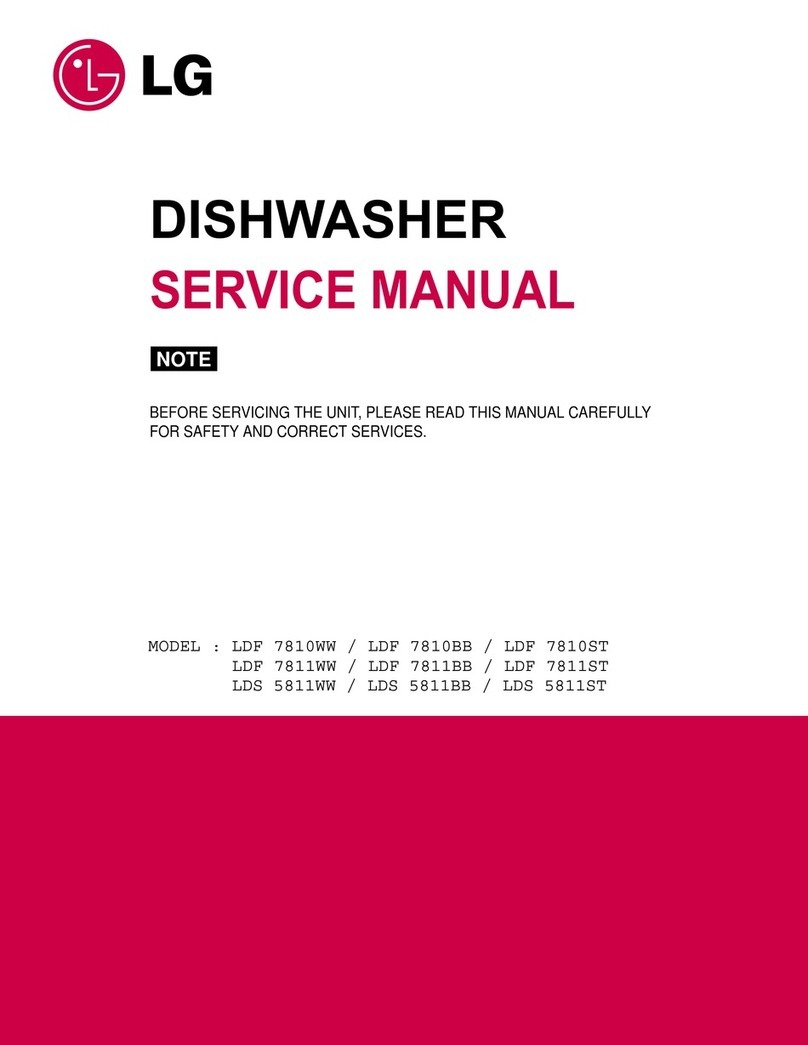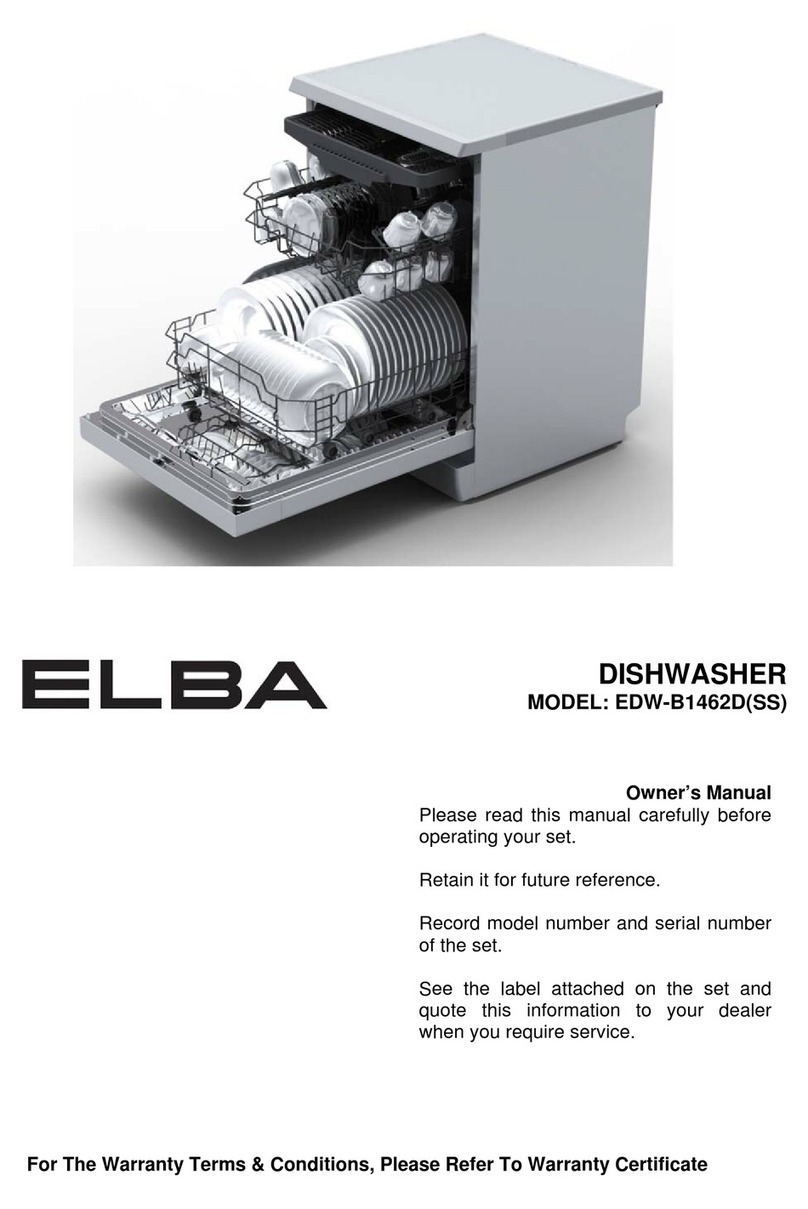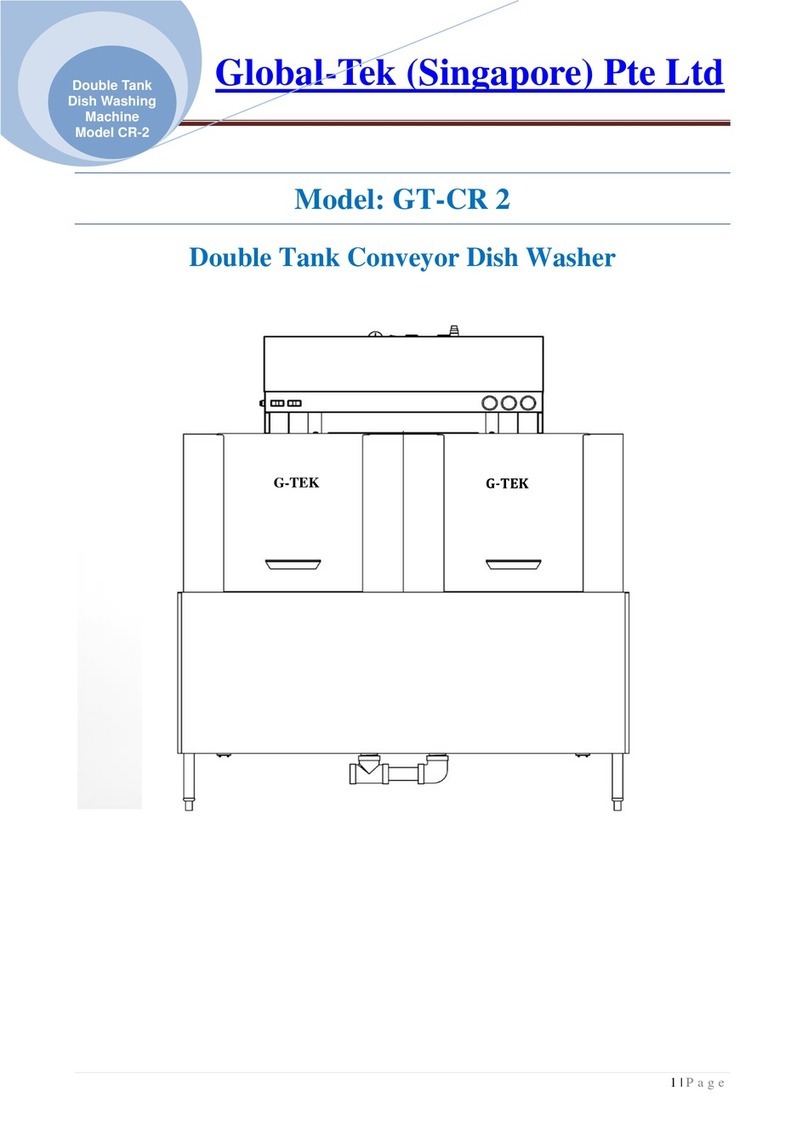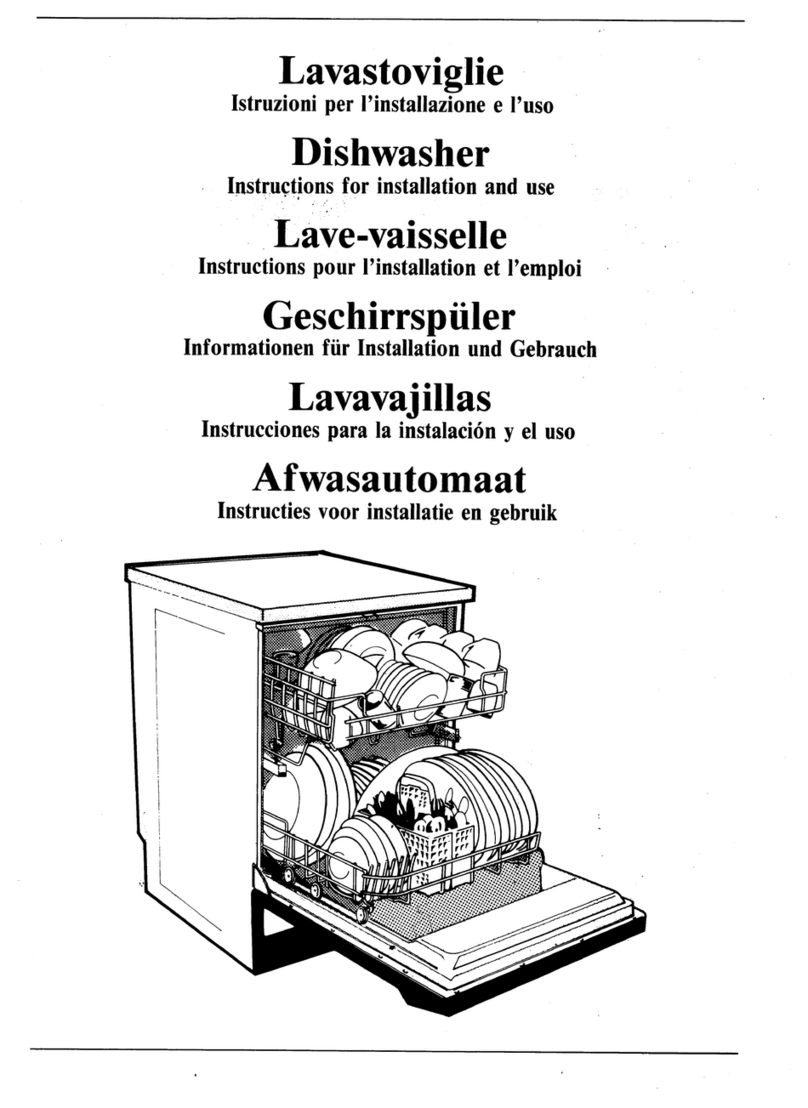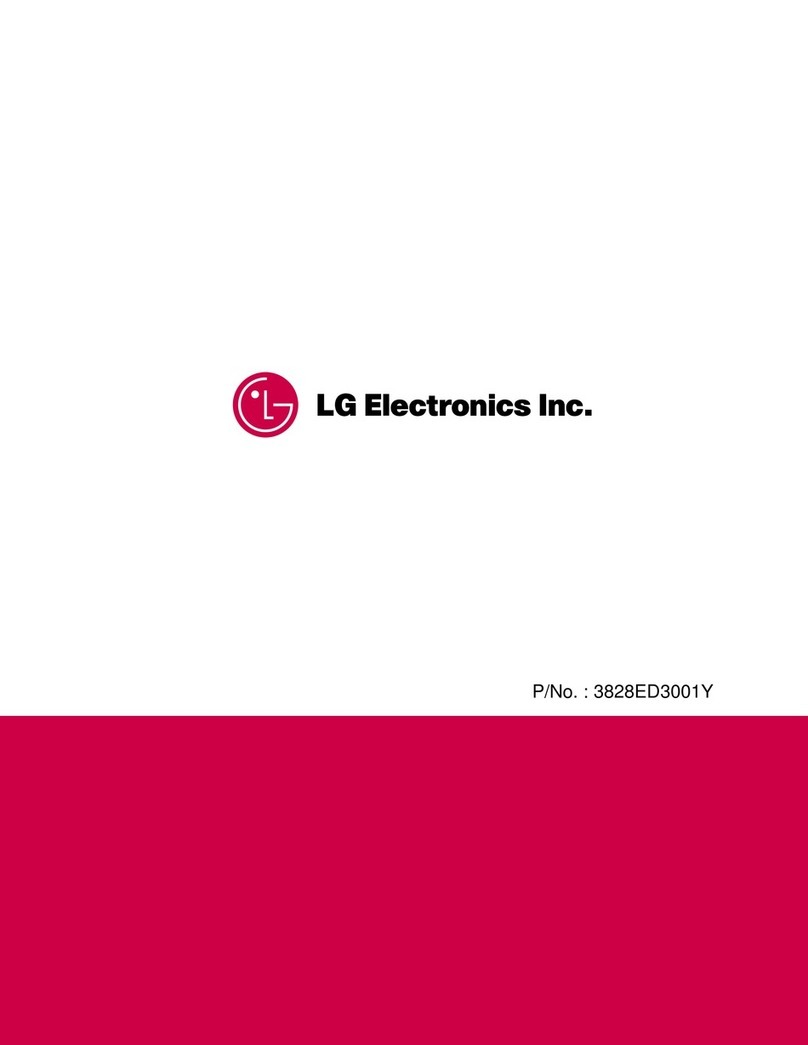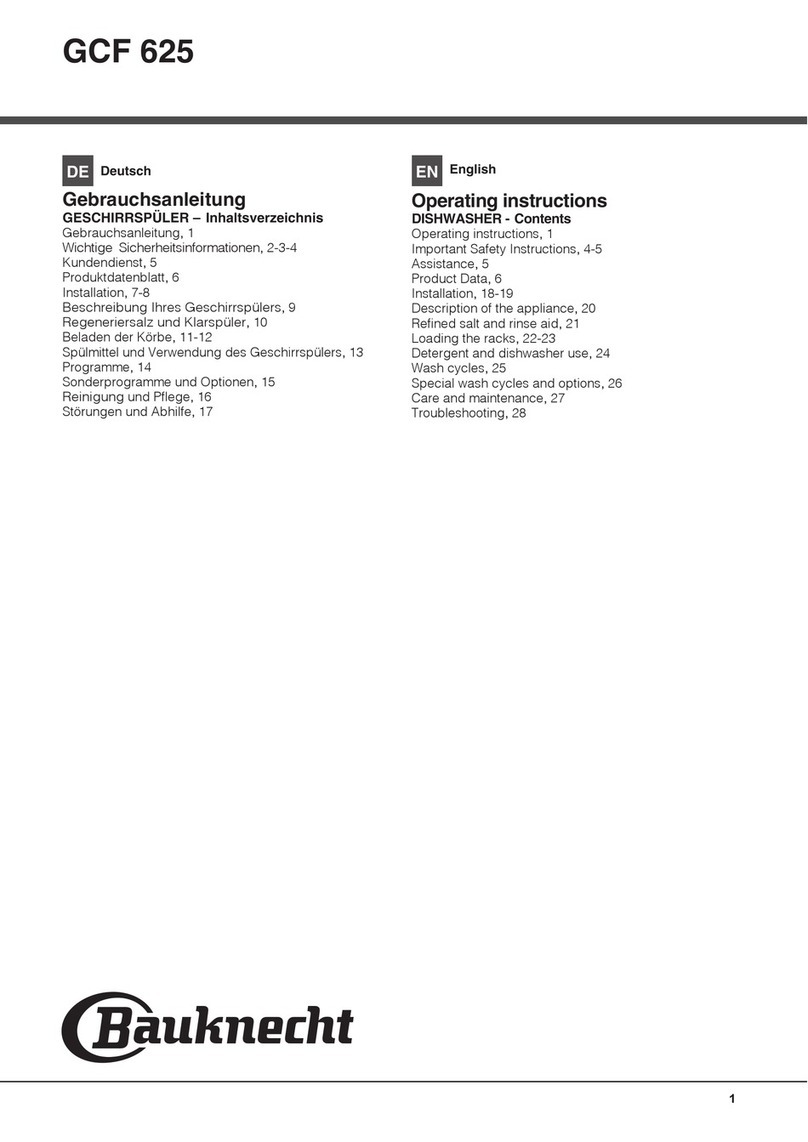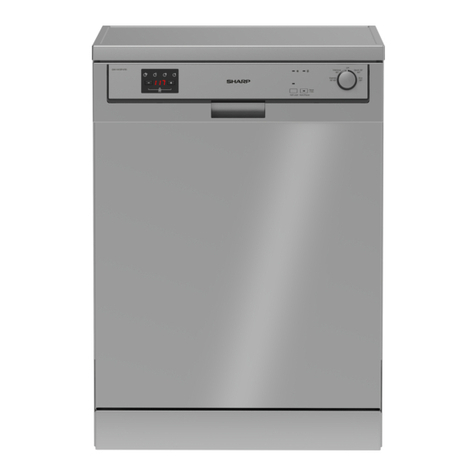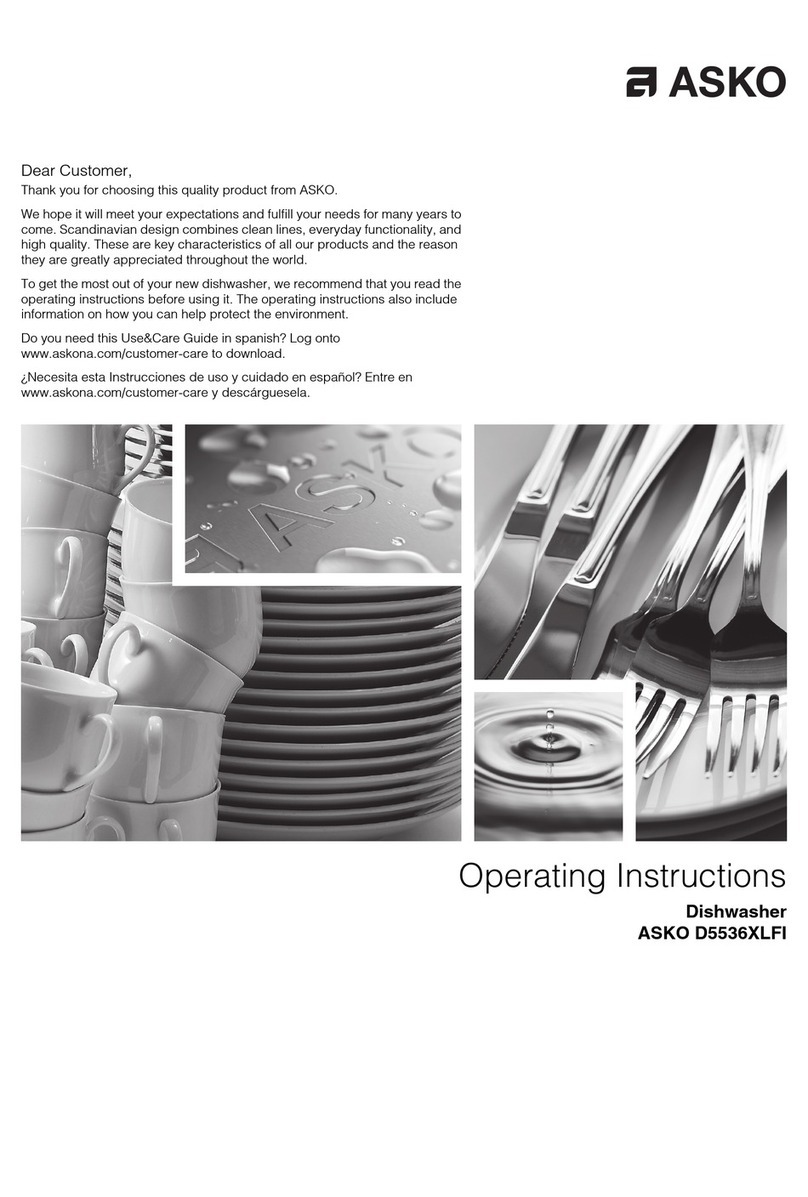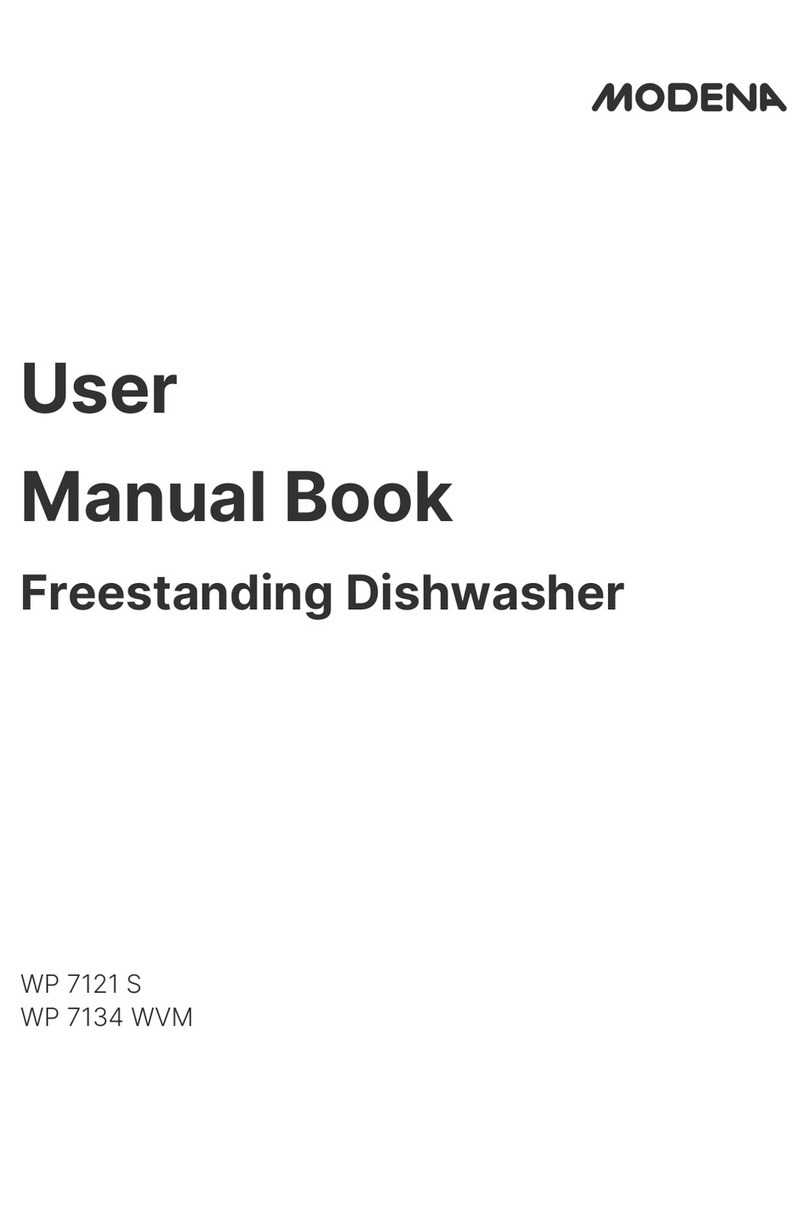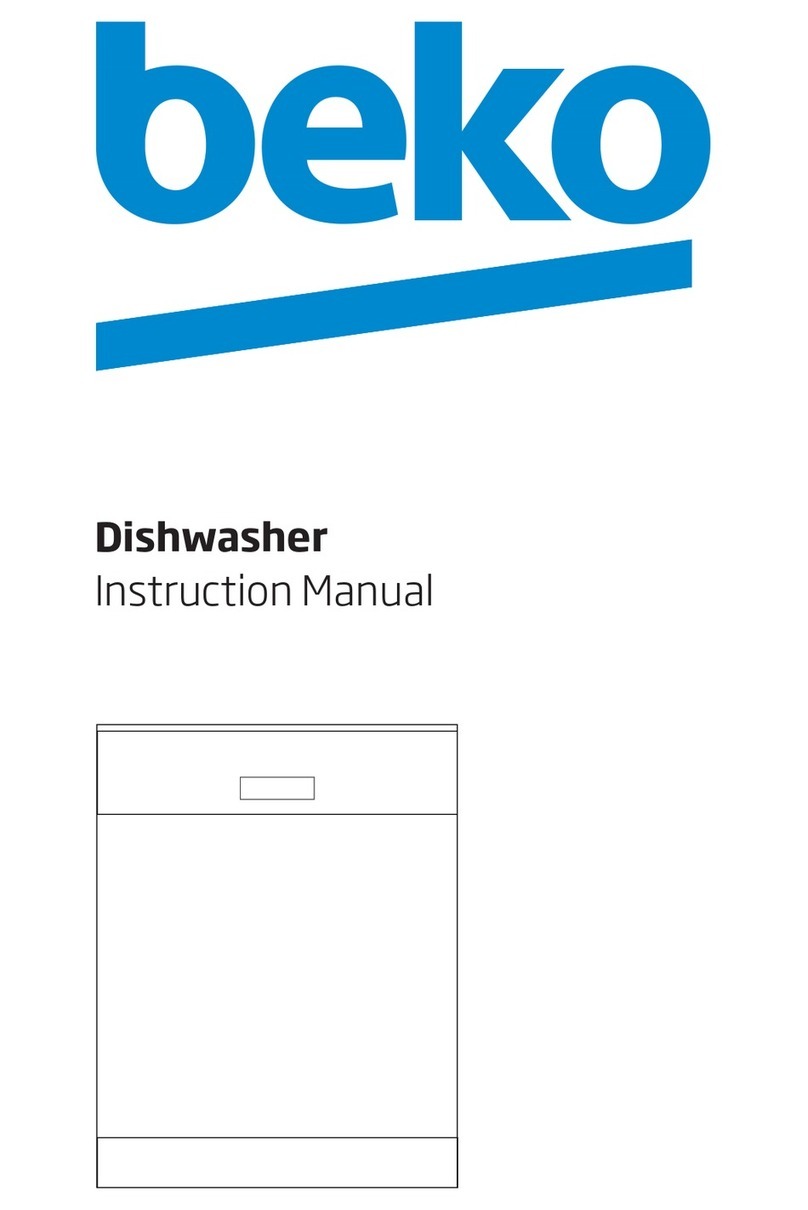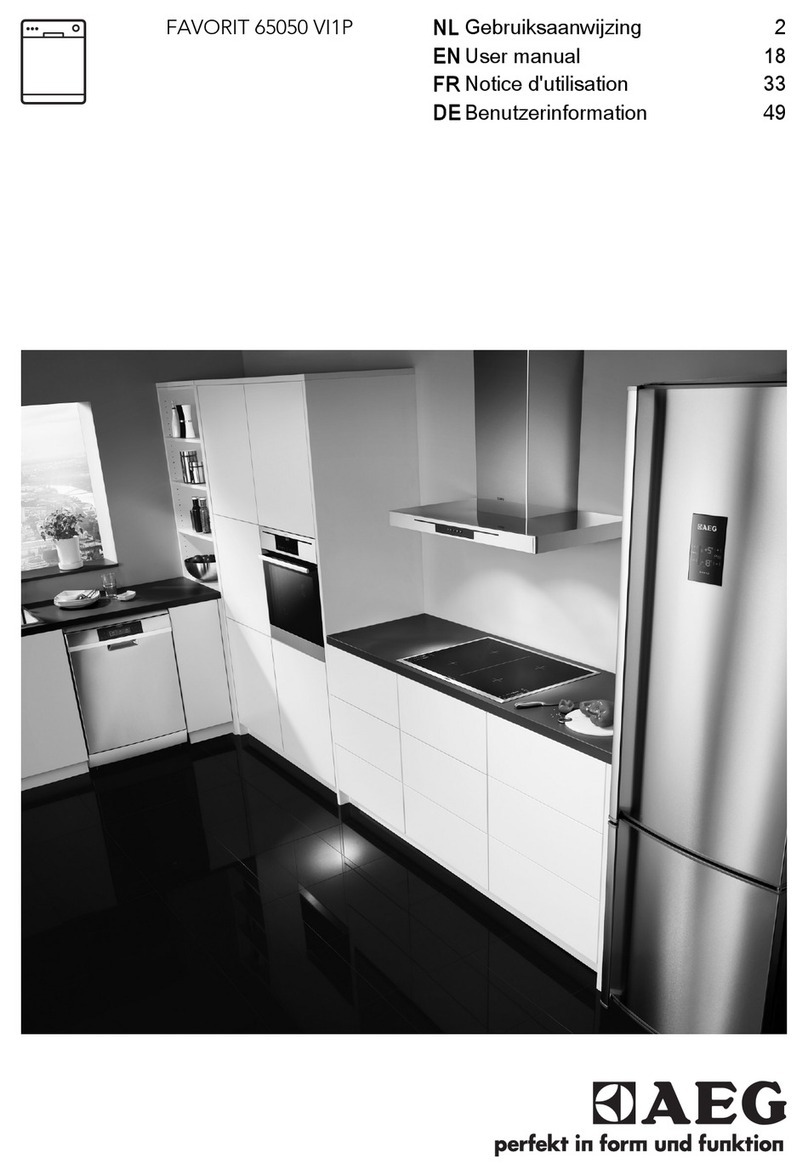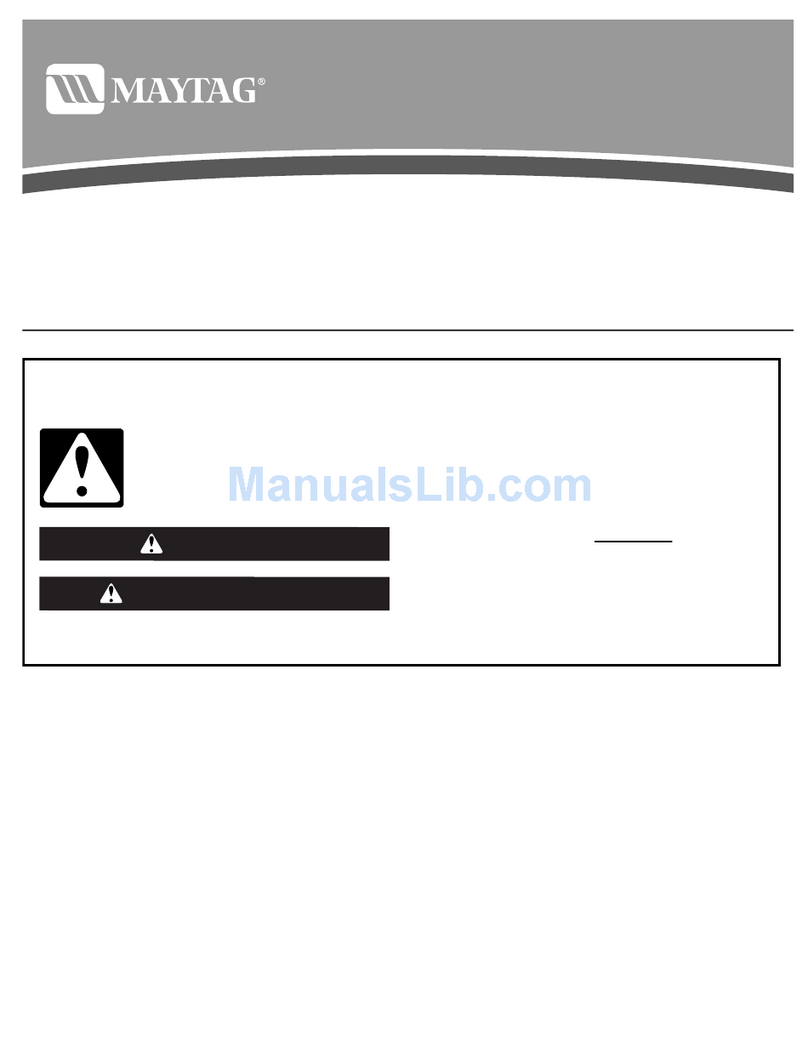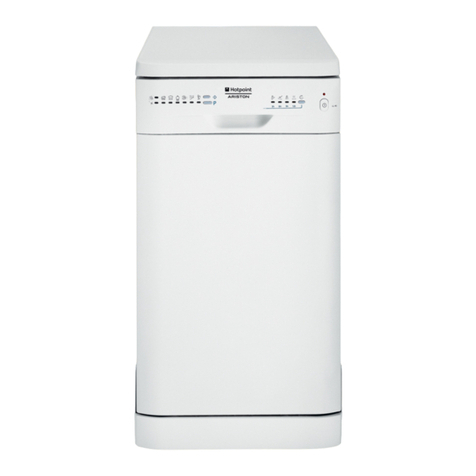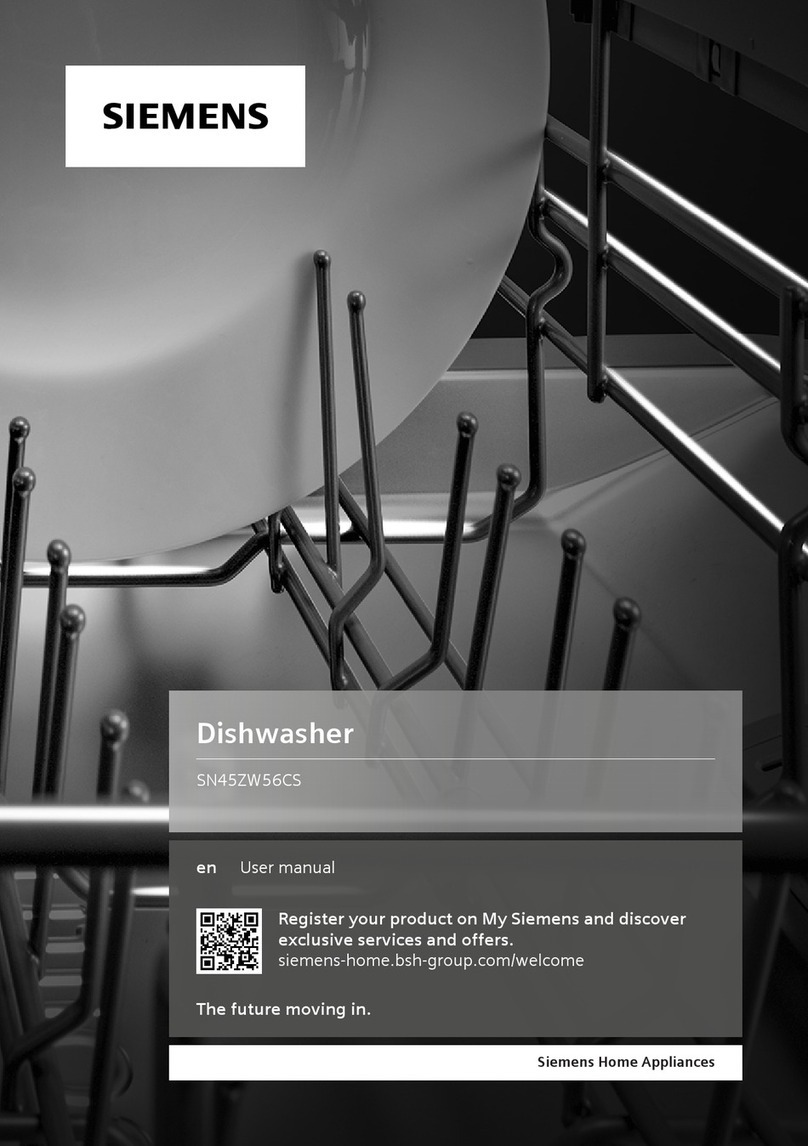Elettrobar River 282 User manual

INSTRUCTION MANUAL FOR DISHWASHERS
Page 1 of 10
GB
CONTENTS
CHAP 1 PREFACE ..................................................................................................................... 2
CHAP 2 INSTALLATION ............................................................................................................ 2
2.1 UNPACKING ........................................................................................................................ 2
2.2 POSITIONING....................................................................................................................... 2
2.3 ELECTRICAL CONNECTION ................................................................................................... 3
2.4 PLUMBING CONNECTION ...................................................................................................... 3
2.5 CONNECTION TO THE DRAIN LINE ......................................................................................... 3
2.6 RINSE AID AND DETERGENT ................................................................................................. 4
CHAP 3 RISKS AND IMPORTANT WARNINGS ....................................................................... 4
CHAP 4 MACHINE USE ............................................................................................................. 5
4.1 LEGEND.............................................................................................................................. 5
4.2 STARTING ........................................................................................................................... 5
4.3 WASHING CYCLE ................................................................................................................. 5
4.4 CYCLE SELECTION AND START-UP........................................................................................ 6
4.5 TURNING OFF THE MACHINE................................................................................................. 6
4.6 REMOVAL OF INTEGRAL FILTER ............................................................................................ 6
4.7 EMPTYING THE MACHINE ..................................................................................................... 7
4.7.1 Machine without drain pump ..................................................................................... 7
4.7.2 Machine with drain pump .......................................................................................... 7
4.7.3 Machines with partial draining: self-cleaning cycle and final draining ....................... 7
4.8 RESIN REGENERATION ........................................................................................................ 7
4.8.1 Machine with external water softener........................................................................ 7
4.9 END OF SERVICE ................................................................................................................. 8
CHAP 5 MAINTENANCE............................................................................................................ 8
5.1 CLEANING AND HYGIENE...................................................................................................... 8
5.2 MAINTENANCE OF FILTERING GROUP.................................................................................... 8
5.3 CLEANING OF WASH ARMS ................................................................................................... 8
CHAP 6 SELF-DIAGNOSIS........................................................................................................ 9
CHAP 7 DISPOSAL .................................................................................................................. 10
7.1 INFORMATION FOR USERS.................................................................................................. 10
The manufacturer reserves legal rights to the property of this document. It is forbidden to reproduce it or distribute it by any means
without prior written authorisation.
The manufacturer reserves the right to introduce changes in order to achieve the improvements it deems necessary without prior notice.

INSTRUCTION MANUAL FOR DISHWASHERS
Page 2 of 10
GB
Chap 1 PREFACE
Failure to follow the instructions provided in the attached documentation may jeopardize
safety of the appliance and immediately cancel the warranty.
The warnings contained in this manual provide important information regarding
safety during the various installation, operation and maintenance stages.
•Carefully store all documentation near the appliance; give it to the technicians and operators
who will be using it. It is the operator’s duty to read, understand and learn this manual
before starting any operation on the machine. The appliance is intended for the
professional washing of dishes for dining facilities. Therefore, installation, use and
maintenance must always be performed by trained personnel who follow the manufacturer’s
instructions. Do not leave within the reach of children. The choice of materials, construction
in conformity with EC safety directives and complete testing ensure the quality of this
machine.
The manufacturer declines all responsibility for damage to property or injuries to persons
deriving from failure to comply with the instructions given or from improper use of the
machine.
Chap 2 INSTALLATION
Proper installation is essential in order for the machine to operate properly. Some of the data
needed for machine installation can be found on the data plate placed on the right side of the
machine and in duplicate on the cover of this manual.
Only qualified, authorised technicians must install the machine.
2.1 Unpacking
Check that the packing is in perfect condition and write down any damage found on the delivery
note. After you have removed the packing, make sure the appliance is intact. If the machine is
damaged, immediately notify the dealer by fax or by registered letter with advice of receipt and the
haulage contractor that transported it. If the damage is such as to jeopardize machine safety, do
not install and/or use it until a qualified technician services it.
The packing components (plastic bags, foam polystyrene, nails, etc. ...) must not be
left within the reach of children and pets as they may be dangerous.
2.2 Positioning
•Check that there are no objects and materials in the installation area
that can be damaged by steam that may exit the machine during
operation, or at least that they are sufficiently protected.
•In order to ensure stability, install and balance the machine on its
four feet.
•Different installation solutions must be agreed upon and approved
by the manufacturer.

INSTRUCTION MANUAL FOR DISHWASHERS
Page 3 of 10
GB
2.3 Electrical connection
•There must be an omnipolar type of main switch that
disconnects all contacts, including the neutral, with a distance
of at least 3 mm between the open contacts and with safety
circuit breaker tripping or connected with fuses, to be sized or
calibrated in conformity with the power indicated on the machine’s
data plate.
•The main switch must be located on the electric line close to the
place of installation, and it must serve only one appliance at a time.
•Electric network voltage and frequency must coincide with those
given on the data plate.
•There must be an effective earthing system in conformity with
the prevention standards in force for operator and equipment
safety.
•The power supply cable (type H07RN-F only) must not be pulled or
crushed during normal operation or routine maintenance.
•The unipotential terminal fastened to the body must be connected to
a unipotential cable having a section suited to the application.
•Respect the polarities indicated in the wiring diagram.
•Consult the enclosed wiring diagram for additional information.
Do not use adaptors, multiple socket outlets or cables of inadequate type and
section or with extension connections not compliant with plant engineering
standards in force.
2.4 Plumbing connection
The appliance is to be connected to the water network with a hose.
There must be a slide on-off, ball or gate valve able to quickly and
completely turn off the water if necessary between the water network
and the appliance’s solenoid valve. The on-off valve must be on the line
near and just before the appliance.
•If the system is new or nearly so, let the water run a long time before making the connection.
•The water supply, temperature and pressure must be compatible with what is indicated on the
machine’s technical data plate.
•If the water’s hardness is greater than 14° F (8 dH), we recommend you install an external
water softener upline of the solenoid valve.
Free drain
2.5 Connection to the drain line
•The drain line must be made up of a free water trap of a size
proportionate to the delivery of the drain pipe supplied with the
machine. The pipe must be able to reach the water trap without
being pulled, squeezed, bent, crushed, pressed or forced in any
way.
•The tank empties by gravity, so the drain must be at a lower level
than the base of the machine.

INSTRUCTION MANUAL FOR DISHWASHERS
Page 4 of 10
GB
With discharge pump (available
on request)
•If the drain is not at a lower level than the base of the machine, you
can use the version equipped with a discharge pump (available on
request).
•In this case the maximum drain height is 1 m.
•Always check that the drain works properly and that it is not clogged.
•All other solutions must be previously agreed upon and approved by
the manufacturer.
2.6 Rinse aid and detergent
•Rinse aid is dispensed by the hydraulic dispenser installed standard on the
machine.
•Dispensing of detergent is manual, even if installation of an automatic dispenser
is always recommended.
•Dispensing is established based on water hardness by the installation
technician, who will also calibrate the dispensers.
•The level of liquids in the container must be high enough that it can be
drawn. It must never empty completely, or be topped off with corrosive or
impure products.
Chap 3 RISKS AND IMPORTANT WARNINGS
•This appliance is to be used only for the use for which it was expressly designed. All other uses are to be considered
unfit and therefore dangerous.
•The specialised personnel who will install the machine are obliged to appropriately instruct the user on the
appliance’s operation and any safety measures that are to be complied with, also by providing practical
demonstrations.
•Any type of service done on the machine, also in case of failure, must be performed only by the manufacturer or by
an authorised service centre and by qualified personnel, using only original spare parts.
•Always disconnect or separate the machine from the electric and water networks before performing maintenance,
repairs or cleaning.
•Untrained personnel must NOT use the machine.
•The machine must NOT remain powered on when it is not in use.
•NEVER open the machine door quickly if it has not finished the cycle.
•NEVER use the machine without the factory-installed safety attachments.
•NEVER use the machine for washing object of a type, shape, size or material not guaranteed for machine washing
or not perfectly intact.
•NEVER use the appliance or its parts as a ladder or support for people, things or animals.
•NEVER overload the open door of front-loading machines, which are sized to support only the rack loaded with
kitchenware.
•NEVER immerse bare hands in the washing solutions.
•NEVER turn the machine over after installation.
•If you notice a malfunction or leakage of liquids, immediately disconnect the electricity and shut off the water supply.
THE FOLLOWING IS ALSO IMPORTANT:
•Never start a wash programme without the overflow in the tub.
•Before you drain the tub, make sure you shut off the machine.
•Never place magnetic objects near the machine, it may start even when the door is open.
•Do not use the upper part of the machine as a support surface.
•The machine may not be used by persons who are unauthorized or who have not been properly trained.
•The installation technician is required to check for proper earthing.
•When testing is complete, the installation technician must issue a written statement concerning correct installation
and testing in accordance with all standards and acceptable working practices.

INSTRUCTION MANUAL FOR DISHWASHERS
Page 5 of 10
GB
Chap 4 MACHINE USE
To simplify the description of the various functions, the layout of the control panel is shown below, with
the name of each key or indicator light and the corresponding numbers. The figures to which reference is
made are included and the beginning of the manual. In the description of the operation of the machine,
reference is always made to these numbers or names.
4.1 Legend
Fig.1 shows:
1 ON/OFF BUTTON 4 INFORMATION DISPLAY
2 PROGRAMME SELECTION BUTTON 5 TIME BAR
3 START BUTTON
23
4.2 Starting
•Turn on the main electrical switch and open the
external water tap.
•Check that there is enough detergent and rinse aid
in the tanks.
•Check the presence of the overflow (when
included).
•Press the ON/OFF key (1) as shown alongside
12
3
•The machine will automatically start filling. The
START button (3) flashes. When the machine is
ready, the button turns green and the time bar
illuminates completely (Fig.2 ).
4.3 Washing cycle
With reference to Fig.3, for correct operation of the machine, it is advisable to follow these rules:
•Use a suitable rack, filling it without overloading it and without placing the dishes one on top of the
other. Always clean off the dishes beforehand,and do not load dishes with dry or solid residue on
them.
•Place empty containers upside-down on the rack. Put the plates and similar kitchenware into the
special inclined rack, with the internal surface facing upwards.
Table of contents
Languages:
Other Elettrobar Dishwasher manuals
